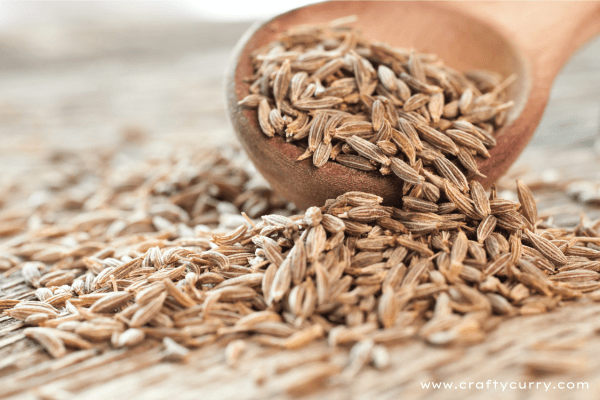
Cumin—this small, powerful spice is a staple in kitchens around the world. Whether you’re making a rich Indian curry, a savory Middle Eastern stew, or even a hearty Mexican chili, cumin’s warm, earthy flavor adds depth and complexity to a variety of dishes. But there’s more to this spice than just its taste! Let’s take a deep dive into cumin—its origins, health benefits, culinary uses, and some fun facts you might not know!
What Is Cumin?
Cumin is a spice made from the dried seeds of the Cuminum cyminum plant, a member of the parsley family. Native to the Mediterranean region, cumin has been used for thousands of years in cooking, medicine, and even religious rituals. Its distinct aroma and flavor make it a go-to ingredient in many traditional cuisines, including Indian, Mexican, Middle Eastern, and North African.
A Brief History of Cumin
Cumin’s journey dates back to ancient civilizations. The Egyptians valued it for its preservative qualities, and it was found in the tombs of pharaohs, often used in the embalming process. The spice spread across Asia and Europe, finding a place in Greek, Roman, and later Arabic cuisine. In medieval Europe, cumin was believed to have aphrodisiacal powers, often used in love potions and as a symbol of fidelity. Talk about a spice with history!
The Health Benefits of Cumin
Not only does cumin bring flavor to your food, but it’s also packed with health benefits. Here are some reasons you should be adding more cumin to your diet:
- Rich in Antioxidants
Cumin contains high levels of antioxidants, which help fight free radicals in the body and reduce oxidative stress. This can contribute to overall better health and a lower risk of chronic diseases. - Aids Digestion
Cumin has been traditionally used to help with digestive issues. It can help stimulate the secretion of digestive enzymes, leading to better digestion and absorption of nutrients. It’s often included in herbal teas or remedies for bloating and indigestion. - Boosts Immunity
Packed with vitamin C, cumin is excellent for boosting your immune system. Regularly adding cumin to your meals can help fight off illnesses and promote overall wellness. - Supports Weight Loss
Some studies have shown that cumin can aid in weight loss by boosting metabolism and increasing fat burning. Incorporating cumin into your diet can help support your weight loss goals—especially when combined with a healthy lifestyle. - Good for Blood Sugar Control
Cumin has shown potential in regulating blood sugar levels, making it a great addition to meals for those looking to control their blood sugar. This is especially beneficial for people with type 2 diabetes.
How to Use Cumin in Your Kitchen
Now that we’ve covered the health benefits, let’s talk about how to bring this flavorful spice into your everyday cooking. Cumin’s versatility makes it perfect for many different types of dishes:
1. Curries and Stews
Cumin is a key ingredient in many curry powders and spice blends. It pairs beautifully with other spices like coriander, turmeric, and cinnamon to create a warm and aromatic base for Indian, Thai, and Middle Eastern curries. Try adding cumin to a rich tomato-based stew or a fragrant vegetable curry for that signature earthy flavor.
2. Mexican and Tex-Mex Cuisine
From taco seasoning to chili, cumin is essential in Mexican and Tex-Mex dishes. Its smoky and slightly bitter taste balances out the spiciness of chili peppers, making it perfect for adding depth to salsas, guacamoles, and marinades.
3. Roasted Vegetables
Toss your favorite vegetables in olive oil, cumin, and other spices like paprika or garlic powder, then roast them in the oven. The heat brings out cumin’s warm and nutty flavor, making it a perfect seasoning for roasted cauliflower, sweet potatoes, and carrots.
4. Breads and Flatbreads
Did you know cumin is often used in Mediterranean and Middle Eastern flatbreads like naan and pita? Its flavor adds complexity and pairs wonderfully with savory toppings. Try adding cumin to your bread dough for a unique twist.
5. Smoothies & Drinks
It might sound unusual, but cumin can also be added to smoothies and drinks. A dash of ground cumin can complement the flavors of tropical fruits like mango or pineapple. You can even make a traditional cumin-spiced drink known as Jeera Water—simply boil cumin seeds in water, then strain and drink for its digestive benefits.
Fun Cumin Facts
- Cumin & Love: As mentioned earlier, cumin was historically thought to have aphrodisiac properties. In medieval times, people carried cumin seeds in pouches to ensure fidelity and love in relationships. So, if you’re looking to spice up your love life, maybe give cumin a try!
- Cumin vs. Caraway: Although cumin and caraway look similar, they are not the same! Caraway has a more anise-like flavor and is often used in rye bread, while cumin has a much warmer, earthier taste. Don’t mix them up in your recipes!
- Cumin in the Kitchen: The ancient Egyptians used cumin not only in cooking but also in embalming and preserving bodies due to its antibacterial properties.
- Cumin & Spice Blends: Cumin is a core component in many spice blends around the world, including Garam Masala (India), Baharat (Middle East), and Taco Seasoning (Mexico). It’s the backbone of so many iconic flavors.
#IngredientDeepDive
